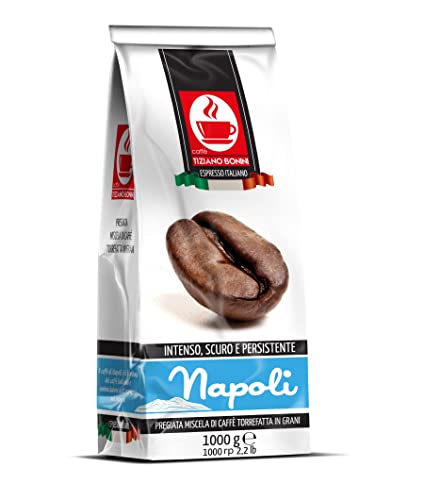What Are Coffee Beans?
Coffee beans are the seeds of a similar to a cherry plant or fruit. They thrive best at altitudes and climates similar to the ones in which they are planted. They also require specific quantities and compositions of soil, water and other factors.
Besides flavor, they also offer numerous health benefits. Coffee is rich in trigonelline that when roasted transforms into the nicotinic (a water-soluble vitamin B). It is also rich in the phenolic acids such as chlorogenic acids, which help to lower blood sugar levels.
Origin
Everyone knows what a roast coffee bean looks like, but many people are unaware that it began as an fruit. coffee beans london is actually a seed, which is derived from the fruit of some species of Coffea plants. Most of the time, the berries split open and contain two beans. However, around 5percent of the harvested beans, one bean does not split. This type of bean is called"peaberry "peaberry" and is typically hand-sorted and sold separately.
The majority of all coffee is produced in what is known as the "Bean Belt" an area of the world that is located in the Tropics of Capricorn and Cancer. Most countries produce coffee using different methods, each with its own flavor characteristic and profile.
It is not known the exact origins of coffee, but it is generally believed the first coffee plants grew in Abyssinia (now Ethiopia). The most popular story is about a goatherd called Kaldi who noticed his goats excited and bleating after consuming the bright red berries growing on nearby shrubs. Kaldi tried the berries and felt the feeling of excitement. Then, he introduced the drink and its benefits to others within his circle and the popularity of the drink grew. In the 15th and 16th century it gained popularity in the Islamic world, despite the fact that Islamic authorities declared it to be intoxicating. an.
Flavor
The flavor of coffee beans depends on the area and species of the coffee plant, but also on the soil elevation, farming methods and roasting process. Different flavors can be obtained by altering the temperature, duration, and the pressure used during roasting and also the amount of air flow while roasting.
The flavor of coffee beans can be influenced by the type of syrup used as a flavoring agent. After roasting beans, they are sprayed with oil-based flavoring agents and then allowed to sit for 30 minutes. This allows beans to absorb the oils. The flavored beans are sorted and graded.
Adding flavor to coffee beans is an easy and cost-effective way to customize the taste of coffee without altering its texture or color. The flavor of flavored beans are generally stronger than regular coffee. This is because the flavoring beans are soaked in flavoring syrup.

The flavor of coffee is also affected by the spices added to it as it is stored. Whole spices including cinnamon sticks, vanilla and cocoa beans can be mixed with freshly made coffee beans in order to create a distinct flavor. This works best when the coffee beans that have been roasted are kept in a container that is aerated.
Health Benefits
Coffee beans have been linked to many health benefits. These benefits include reducing the risk of Alzheimer's, Parkinson's disease, liver disease and other ailments. The caffeine in coffee beans has been proven to boost memory and cognitive function. Coffee also contains a range of antioxidants which fight free radicals' effects. Chlorogenic acid found in coffee is believed to prevent chronic illnesses such as heart disease and diabetes.
Consuming coffee beans has been associated with a lower risk of developing type 2 diabetics. Researchers have also discovered that it may help lower the risk of Parkinson's disease, liver disease and cancers of the colon and colorectal tract. Coffee is linked to increased brain function, and it could help prevent depression. Numerous studies have shown that the presence of certain acids in coffee can increase levels of serotonin and dopamine.
Although drinking coffee beans that are raw is a healthy option for many people but it shouldn't be used to replace a healthy diet and regular exercise. The caffeine effect should not be pushed to the limit, since it can trigger anxiety, jitters and insomnia. Additionally, if you suffer from acid reflux or have sensitive stomachs it is recommended to avoid coffee beans.
Preparation
The coffee plant produces two seeds (or beans) that are arranged in a flat fashion against each other. Each fruit has an outer skin called the exocarp as well as the pulp is a thin layer on top. The coffee seeds are taken from their covers, separated and cleaned prior to roasting. The beans can be processed in three ways dry, moist, or a hybrid that is known as wet-processed. The beans are then roasted, and can be ground, or left uncooked.
Coffee bean varieties come with a variety of flavor profiles that go with the wide range of drinks dishes, desserts and other recipes. The right choice for a recipe is determined by the flavor and texture you wish to achieve.
The coffee bean has wax that is intact when it is whole. This layer shields the aroma and flavor compounds of the coffee from the air. After grinding,, the compounds are exposed to the air, and they begin to lose their flavor over time. When you make coffee, the temperature of the water you choose to use is crucial to preserve and capture the flavors. Pouring at a lower temperature releases less of the flavors, whereas an elevated temperature releases more. It is essential to brew coffee at a temperature that suits your taste. If you don't follow this the flavor will become bitter or sour.
